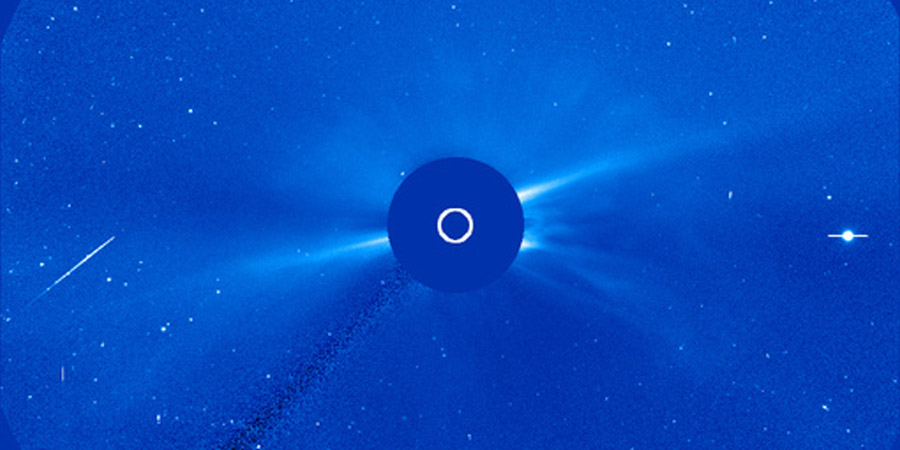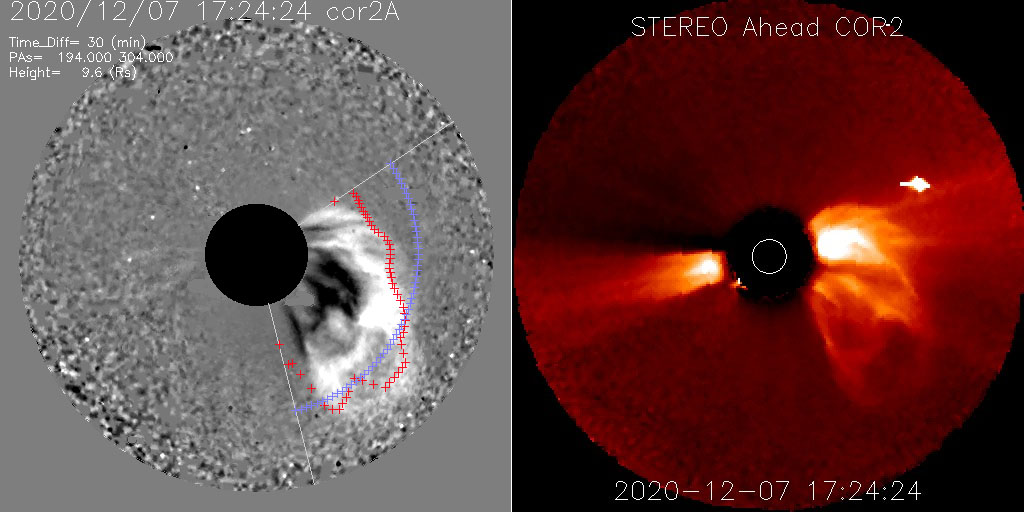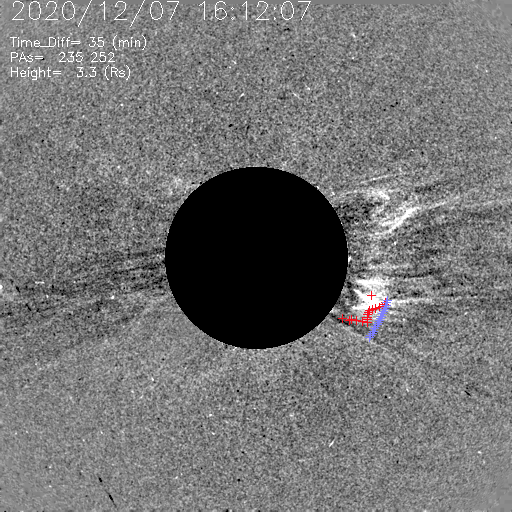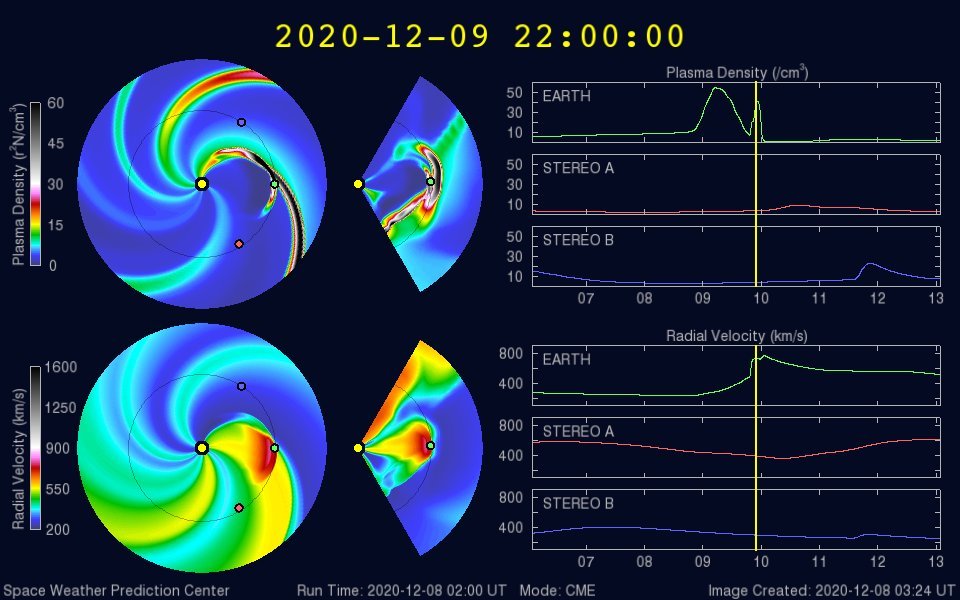Earth-directed coronal mass ejection
Tuesday, 8 December 2020 08:56 UTC

What a surprise event we got yesterday! Sunspot region 2790 which decayed over the past few days and seemingly only has a simple magnetic layout, delivered with a long duration C7.4 solar flare. As mentioned in the news article yesterday, this solar flare was eruptive and it quickly became apparent that it launched a coronal mass ejection which is likely to hit Earth.

STEREO Ahead already told most of what we had to know but now that we have earth-facing coronagraph imagery from our trusty old friend SOHO we can come to the definitive conclusion that we have a coronal mass ejection heading towards our planet. A clear asymmetrical full halo coronal mass ejection can be seen on the SOHO LASCO C2 and C3 imagery leaving the Sun following the C7.4 solar flare. The bulk of the coronal mass ejection is heading somewhat south of our planet but we do expect to see a decent impact when the plasma cloud arrives at our planet. Based on the coronagraph imagery that we have available to us, it is pretty much a guarantee that this plasma cloud will impact our planet in the near future. No need to worry about a glancing blow or perhaps a near miss, this plasma cloud will impact our magnetosphere.

The NOAA SWPC's latest ENLIL solar wind model run shows the coronal mass ejection impacting our planet tomorrow (9 december) around 22 UTC. A minor coronal hole solar wind stream also needs to be taken into account which could influence the travel time of this plasma cloud but a travel time of about 2,5 days seems fair for this coronal mass ejection. Solar wind speeds up to 700km/s are not out of the question when the plasma cloud arrives. The big unknown will like always be the interplanetary magnetic field. Will we see a mostly northward Bz component or are we going to get a mostly southward Bz component? This is always a big question mark when it comes to these kind of events but if we get a mostly negative (southward) Bz component of the IMF we think that moderate G2 geomagnetic storm conditions (Kp6) are very likely on 10 December with a slight chance of strong G3 geomagnetic storm conditions. This means that high latitude sky watchers need to be alert for some vivid auroral displays and middle latitude sky watchers should be alert for possible aurora displays towards the horizon. Good luck!

Thank you for reading this article! Did you have any trouble with the technical terms used in this article? Our help section is the place to be where you can find in-depth articles, a FAQ and a list with common abbreviations. Still puzzled? Just post on our forum where we will help you the best we can!
Latest news
Latest forum messages
Support SpaceWeatherLive.com!
A lot of people come to SpaceWeatherLive to follow the Sun's activity or if there is aurora to be seen, but with more traffic comes higher server costs. Consider a donation if you enjoy SpaceWeatherLive so we can keep the website online!

Space weather facts
| Last X-flare | 2024/03/28 | X1.1 |
| Last M-flare | 2024/04/19 | M1.0 |
| Last geomagnetic storm | 2024/04/19 | Kp7 (G3) |
| Spotless days | |
|---|---|
| Last spotless day | 2022/06/08 |
| Monthly mean Sunspot Number | |
|---|---|
| March 2024 | 104.9 -19.8 |


